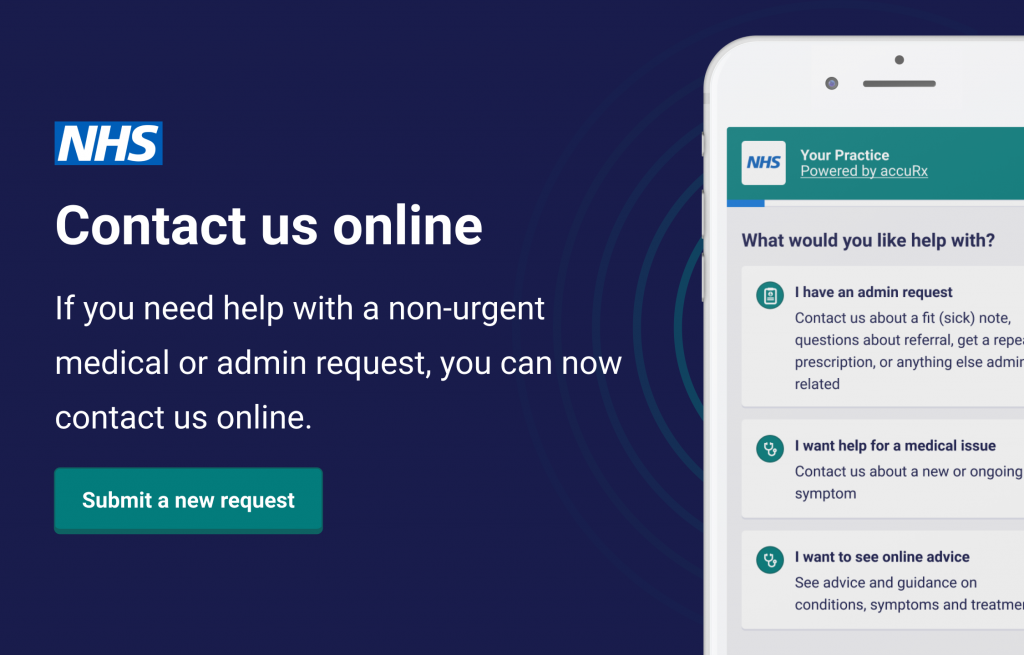The national opt out 2022
You can choose whether your confidential patient’s information is used for research and planning. To find out more visit nhs.uk/your-nhs-matters.
You do not need to do anything if you are happy about your confidentiality patient information is used. You can change your choice at any time.
Type 1 opt-out: medical records held at your GP practice
You can tell your GP practice if you do not want your confidential patient information held in your GP medical record to be used for purposes other than your individual care. This is commonly called a type 1 opt-out. This opt-out request can only be recorded by your GP practice.
Type 2 opt-out: information held by NHS Digital
Previously you could tell your GP practice if you do not want NHS Digital to share confidentiality patient information that they collect from across the health and care service for purposes other than your individual care. This was called a type 2 opt-out.
The type 2 opt-out was replaced by the national data opt-out. Type 2 opt-outs recorded on or before 11 October 2018 have been automatically converted to national data opt-outs.
Read more about the collection and conversion of type 2 opt-outs
Patients who can choose to set a national data opt-out
Anyone who has an NHS number and has registered for care or treatment with the NHS in England can set an opt out if they wish to, even if they don’t currently live in England
Patients who can set an opt-out choice for themselves
If a patient is aged 13 or over, they can set their own opt-out choice using the online service, the telephone service, the nhs App, or ‘print-and-post’ completing a form by hand and sending it in.
Patients who can set an opt-out choice on behalf of someone else
Someone can set an opt-out choice on behalf of a patient, by proxy, if:
• They are the parent or legal guardian of the patient, who is a child aged 12 or under
• They have a formal legal relationship with the patient, for example they have legal power of attorney or are a court-appointed deputy
They can only do this using the ‘print and post’ service.
Changing an opt-out choice
An opt-out choice can be changed at any time by the patient or their proxy.
Using the online service
Patients can set their own opt-out choice by visiting www.nhs.uk/your-nhs-data-matters using any internet enabled device. So that the service can confirm their identity, they will need to provide:
• Their NHS number, or their postcode (as registered with their GP practice)
• Their mobile phone number or email address provided previously at a GP practice or other NHS service
The online service is available 24 hours a day, 7 days a week.
Using the NHS app
Patients who have registered for the NHS App using NHS login can set a national opt-out using the app.
Using the telephone service
Patients can set their own opt-out choice by calling 0300 303 5678.
Calling this number should cost no more than calls to a normal landline number.
The telephone service is available 9am to 5pm, Monday to Friday, aprt from on English or public bank holidays.
Using ‘print and post’
If a patient is unable the online or telephone service, or would prefer not to, they can complete a paper form and post it.
The form can be downloaded from www.nhs.uk/your-nhs-data matters or requested by calling the telephone service on 0300 303 5678.
Patients in prison or secure settings
There are special arrangements for patients in prison or other similar secure settings, known as detained and secure estates. A health and care professional can help register a patient’s opt-out choice. See Guidance for detained and secure estates.
Confirmation
During the process of setting their opt-out choice, the patient can choose their preferred communication method:• Email• SMS text• Letter
Once the process has been completed, the patient will receive a confirmation that their national data opt-out choice has been set.
More information
See 3. Setting an opt-out in the national data opt-out operational policy guidance for full details.
